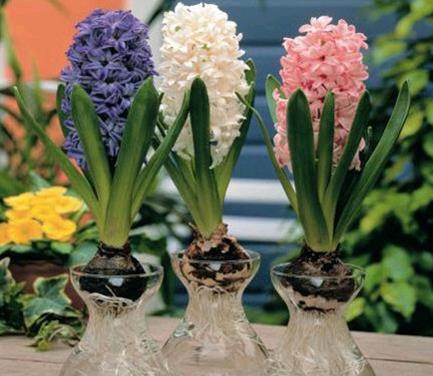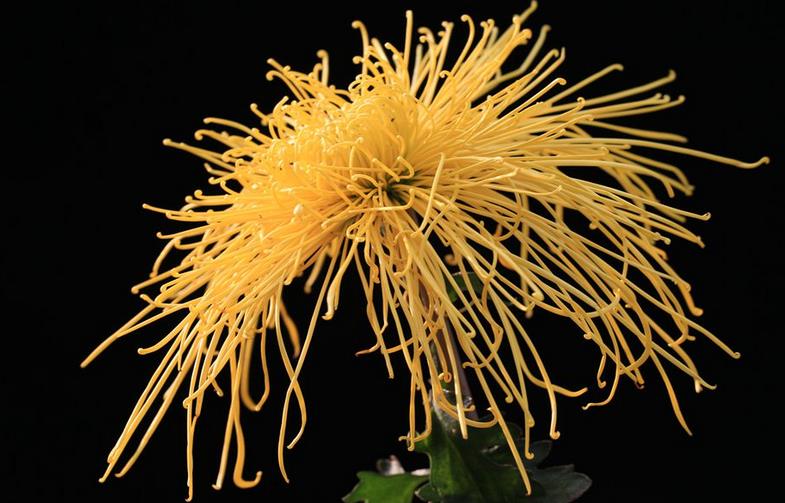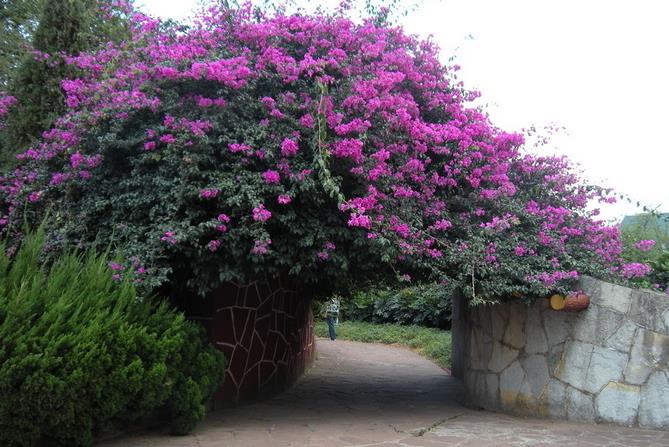How to do the root rot of hyacinth in hydroponics? How to manage hyacinth properly after flowering? ...
Hyacinth meeting in clusters, colorful, looks very cute. Hyacinth is also one of the potted plants that people like to raise, but the root of hyacinth is easy to rot is the biggest headache for all of us. Today, let's find out what to do about decay. By the way, how to manage hyacinth after flowering?
How to do the root rot of hyacinth in hydroponics?
In the process of hydroponic culture, rotting roots are often caused by management and other reasons, such as too low temperature, excessive fertilization, diseases and so on. Rotting roots will make the water quality worse and affect the growth of plants. To judge whether the root is rotten, one is to smell the root with the nose, and if there is a bad smell, it proves that the root has rotted; the second is to smell the water, which means that the root system may also rot and deteriorate; and the third is to observe the appearance of the root system. If the root turns yellow and changes color, it means that the root system has been damaged. After the root system is rotten, gently pull the rhizosphere with your hand, and its epidermis is very easy to tear off, leaving only the lignified part. The water is not clean, or there are more miscellaneous bacteria for a long time, if the degree is not serious, scrape off the moldy area, smear the sulfur powder for sterilization, change the water frequently, and maintain a good environment with ventilation and light.
After the emergence of rotten roots, to be cut off in time, generally rotten roots are gradually rotting upward from the tip, after pruning, until cut to the normal root system. After changing water, pay attention to observation, if there continue to be rotten roots, to be timely: you can add 1000 potassium permanganate to deal with it, and it also has the effect of killing bacteria and algae.

How to do the root rot of hyacinth in hydroponics? How to manage hyacinth after blooming?
How to manage hyacinth after blooming?
Hyacinth is native to southern Europe. Hardy, like well-drained and fertile loam and plenty of sunshine. It takes root in autumn, sprouts in early spring, blossoms from late March to early April, and the plant withered and dormant in early June. If hyacinth does not plan to collect seeds after flowering, the flower stem should be cut off to promote bulb development, and the cutting position should be in the uppermost part of the flower stem as far as possible. The bulb roots can be dug up in early June, spread out and stored in cold storage, and the summer temperature should not exceed 28C.
1. Potted plant
With loam, rotten leaf soil, fine sand and other mixed nutrition soil, generally 10 cm diameter potted one ball, 15 cm caliber potted 2cm 3 balls, and then buried in the pot, the overlying soil 10 cm ~ 15 cm, after 7-8 weeks, buds grow to more than 10 cm, go to cover the soil to make the sun shine, generally planted in October-November, flowering in March.
two。 Cultivation
Choose loose soil with good drainage and apply sufficient base fertilizer. The depth of planting is 5-8 cm. Keep the soil moist after planting. Fertilize once before and after flowering. After the plant withered in June, the bulbs were dug up, dried and stored in the room where the temperature did not exceed 28 ℃.
3. Reproduction
The main method is to divide balls and reproduce. After one year of planting, the female ball can be divided into 1-2 bulbs, which can be used for bulb reproduction, and it takes 3 years to blossom. The seeds propagate, sow in autumn, germinate in February of the following year, and the seedlings bloom after 4-5 years of culture.
Hyacinth hydroponic super-practical hydroponic hyacinth planting and maintenance strategy (diagram)
Follow the official account "yanghua98" on Wechat to read more such good articles.
Recently, many flower friends are growing hyacinth, and many of them are hydroponic. Today, the editor will teach you the planting and maintenance skills of hyacinth. If you have more good maintenance skills, you can be private.
1. Cut off the withered roots
After receiving the seed ball, first remove the dead root of the seed ball, if it is not removed, it will cause the root disk to absorb water and cause the rotten ball; no matter it is pulled or cut, the root disk can not be damaged.
Many people are more distressed on the question of whether to peel or not. the principle is to go as little as possible, there are mildew spots to wipe, and the dry skin can be torn off.
two。 Removal of bacteria by carbendazim
Because the transportation time of planting balls is relatively long, it is inevitable that there will be mold invasion. It is suggested that we should first disinfect and sterilize the bulbs to prevent and cure mildew.
Carbendazim is allocated according to the proportion of 1RU 1000, which, in popular terms, is a bag of carbendazim mixed with water 1000ml. After stirring evenly with a stick, soak the cleaned seed ball in carbendazim solution for about half an hour, then put the seed ball in a cool and ventilated place and dry it for 24 hours. Note: please leave some of them in reserve when using carbendazim. Later, there may still be mildew, this is a normal phenomenon, you can use cotton cloth, cotton swabs with carbendazim liquid to wipe the moldy parts.
3. Selection of hydroponic utensils and matters needing attention
Hydroponic culture is convenient and sanitary, as long as a cup, the mouth of the cup should not be too big, to be able to hold the sphere, professional hydroponic bottle is of course the best, hydroponic basket is also good.
About the lateral buds. Most plants reproduce by seeds, but hyacinths reproduce nutritionally and breed the next generation by dividing balls. It is normal for hyacinth in this season to have lateral buds (small balls). Personally, it is suggested that beginners can erase lateral buds and discard them completely, because in our domestic climate, it is almost impossible to cultivate a hyacinth ball into a flowering ball in a natural environment.
Hyacinth is easy to rot, so when hydroponics, the water should not flood the sphere, and there must be a gap between the seed ball and the surface of the water with 5mm.
4. Shading treatment at rooting stage
The hyacinth should be protected from the light when the pot is just planted, that is, the seed ball and the vase should be put in a dark place, where the sun can not be seen. You can wrap the transparent part of the bottle with plastic bags and newspapers, discuss shading treatment for 15-20 days, keep the temperature at about 9-10 degrees, change the water once every 5 days, and change the water every 7 days after growing roots.
After growing roots, about 5 drops of nutrient solution are added each time to change the water to promote the plant to grow healthier. Of course, you don't have to drop it, but you can still grow very well.
5. Bask in the sun during the long leaf period
After the hyacinth shelter period is over, it needs enough sunlight to promote the growth of the leaves. Otherwise, the plant is prone to overgrowth, and the serious ones will not blossom.
During this period, the root of hyacinth has grown very long, so be careful not to hurt the root every time you change water. When changing water, you only need to lift the sphere slightly, there is a gap to let the water flow out of OK, and when adding water, slowly pour the water in from the gap.
6. Maintenance during growth and flowering period
It takes about 50-60 days for hyacinth to blossom, and sufficient light is needed for flowering. When the flower bud grows to 5-8cm high (about 8-12 weeks), the vase can be placed in a warm environment, and the optimum temperature is 15-21 degrees.
On the other hand, hyacinth pedicel shows less sunlight after it grows tall and blossoms, so the flowering period is longer, and the sun will accelerate the withering of flowers and excessive consumption of nutrients after flowering.
After the hyacinth flower has withered, you can cut off the root and hang it on the balcony in a net bag for two days before planting it in autumn.
Recently, many flower friends are growing hyacinth, and many of them are hydroponic. Today, the editor will teach you the planting and maintenance skills of hyacinth. If you have more good maintenance skills, you can be private! 1. Cut off the withered roots
After receiving the seed ball, first remove the dead root of the seed ball, if it is not removed, it will cause the root disk to absorb water and cause the rotten ball; no matter it is pulled or cut, the root disk can not be damaged. Many people are more distressed on the question of whether to peel or not. the principle is to go as little as possible, there are mildew spots to wipe, and the dry skin can be torn off. two。 Removal of bacteria by carbendazim
Because the transportation time of planting balls is relatively long, it is inevitable that there will be mold invasion. It is suggested that we should first disinfect and sterilize the bulbs to prevent and cure mildew. Carbendazim is allocated according to the proportion of 1RU 1000, which, in popular terms, is a bag of carbendazim mixed with water 1000ml. After stirring evenly with a stick, soak the cleaned seed ball in carbendazim solution for about half an hour, then put the seed ball in a cool and ventilated place and dry for 24 hours. Note: please leave some of them in reserve when using carbendazim. Later, there may still be mildew, which is a normal phenomenon. At this time, you can wipe the moldy parts with cotton cloth and cotton swabs. 3. Selection of hydroponic utensils and matters needing attention
1. Hydroponic culture is convenient and sanitary, as long as a cup, the mouth of the cup should not be too big, to be able to hold the sphere, professional hydroponic bottle is of course the best, hydroponic basket is also good. two。 About the lateral buds. Most plants reproduce by seeds, but hyacinths reproduce nutritionally and breed the next generation by dividing balls. It is normal for hyacinth in this season to have lateral buds (small balls). Personally, it is suggested that beginners can erase lateral buds and discard them completely, because in our domestic climate, it is almost impossible to cultivate a hyacinth ball into a flowering ball in a natural environment. 3. Hyacinth is easy to rot, so when hydroponics, the water should not flood the sphere, and there must be a gap between the seed ball and the surface of the water with 5mm. 4. Shading treatment at rooting stage
The hyacinth should be protected from the light when the pot is just planted, that is, the seed ball and the vase should be put in a dark place, where the sun can not be seen. You can wrap the transparent part of the bottle with plastic bags and newspapers, discuss shading treatment for 15-20 days, keep the temperature at about 9-10 degrees, change the water once every 5 days, and change the water every 7 days after growing roots. After growing roots, about 5 drops of nutrient solution are added each time to change the water to promote the plant to grow healthier. Of course, you don't have to drop it, but you can still grow very well. 5. Bask in the sun during the long leaf period
After the hyacinth shelter period is over, it needs enough sunlight to promote the growth of the leaves. Otherwise, the plant is prone to overgrowth, and the serious ones will not blossom. During this period, the root of hyacinth has grown very long, so be careful not to hurt the root every time you change water. When changing water, you only need to lift the sphere slightly, there is a gap to let the water flow out of OK, and when adding water, slowly pour the water in from the gap. 6. Maintenance during growth and flowering period
It takes about 50-60 days for hyacinth to blossom, and sufficient light is needed for flowering. When the flower bud grows to 5-8cm high (about 8-12 weeks), the vase can be placed in a warm environment, and the optimum temperature is 15-21 degrees. On the other hand, hyacinth pedicel shows less sunlight after it grows tall and blossoms, so the flowering period is longer, and the sun will accelerate the withering of flowers and excessive consumption of nutrients after flowering. After the hyacinth flower has withered, you can cut off the root and hang it on the balcony in a net bag for two days before planting it in autumn.
- Prev

What are the causes of chrysanthemum malformations? What are the various reproductive methods of chrysanthemum?
What are the causes of chrysanthemum malformations?① When chrysanthemum buds appear, the side buds should be removed in time, and 2 top buds should be kept first. When it grows to be larger than the bean seeds, only one correct bud should be selected. Do not bruise or pinch the buds left with your fingers. The damaged or pinched buds cannot produce round flowers.
- Next

What is the cultivation and cultivation method of triangular plum? How to control the pruning time of triangular plum? ...
Triangular plum is what we often call leaf flower or safflower kudzu. Triangular plum is an important ornamental flower in common urban greening, which is often planted on flower racks or walls to climb and grow. The beautiful flowers bloom on its overhanging branches at the turn of winter and spring. In addition, it can also be planted as a flower hedge.
Related
- Fuxing push coffee new agricultural production and marketing class: lack of small-scale processing plants
- Jujube rice field leisure farm deep ploughing Yilan for five years to create a space for organic food and play
- Nongyu Farm-A trial of organic papaya for brave women with advanced technology
- Four points for attention in the prevention and control of diseases and insect pests of edible fungi
- How to add nutrient solution to Edible Fungi
- Is there any good way to control edible fungus mites?
- Open Inoculation Technology of Edible Fungi
- Is there any clever way to use fertilizer for edible fungus in winter?
- What agents are used to kill the pathogens of edible fungi in the mushroom shed?
- Rapid drying of Edible Fungi

